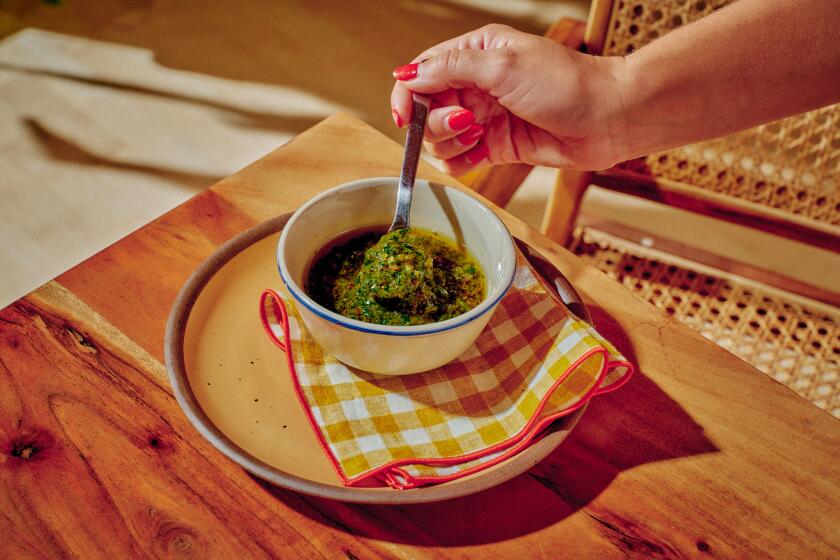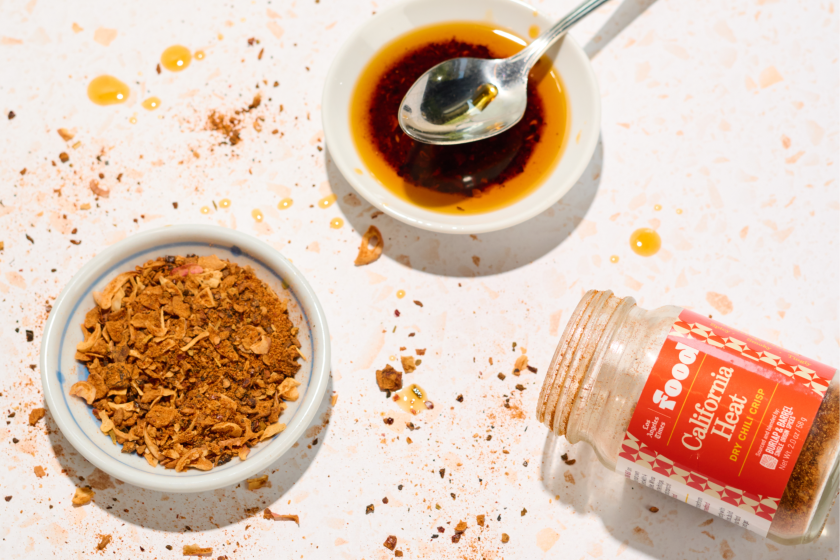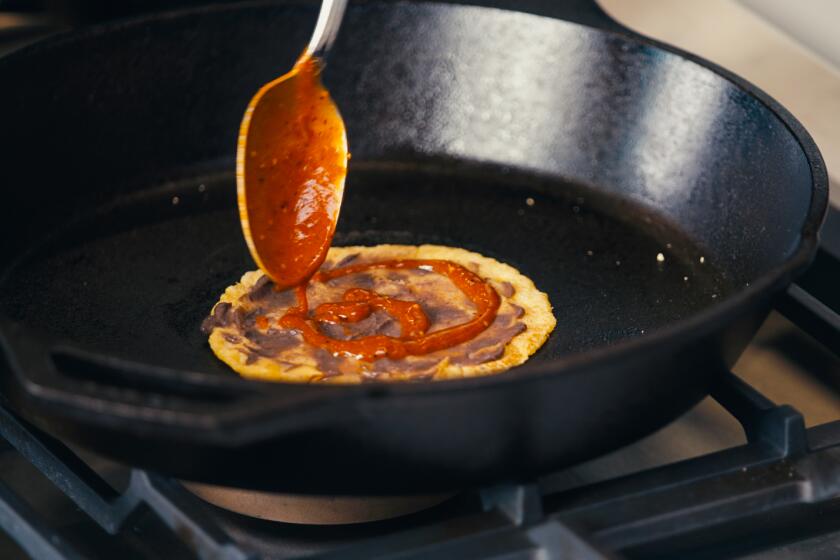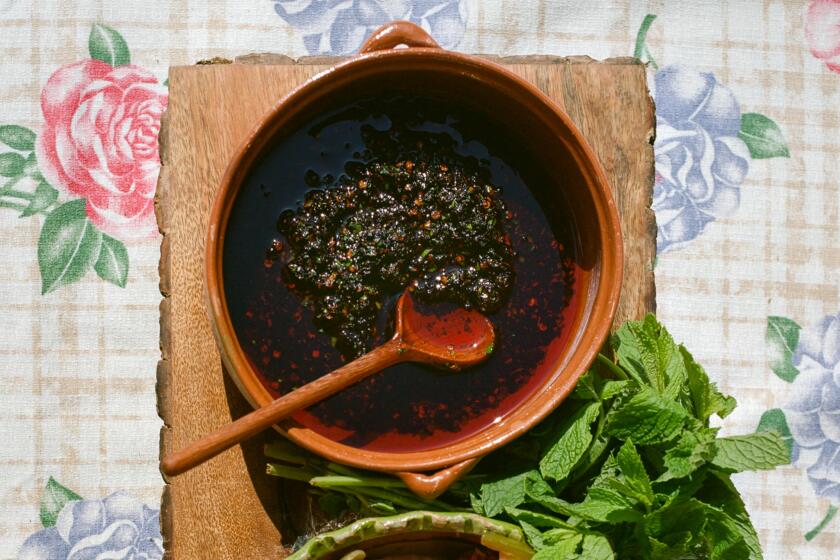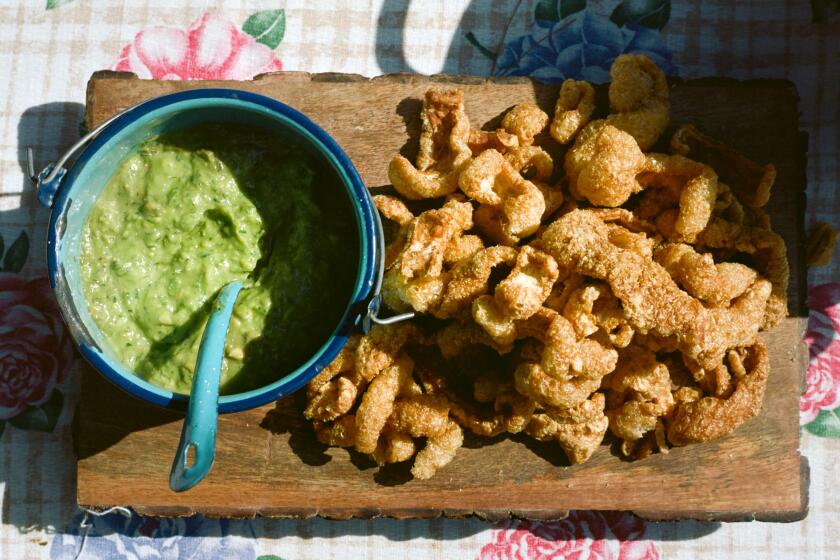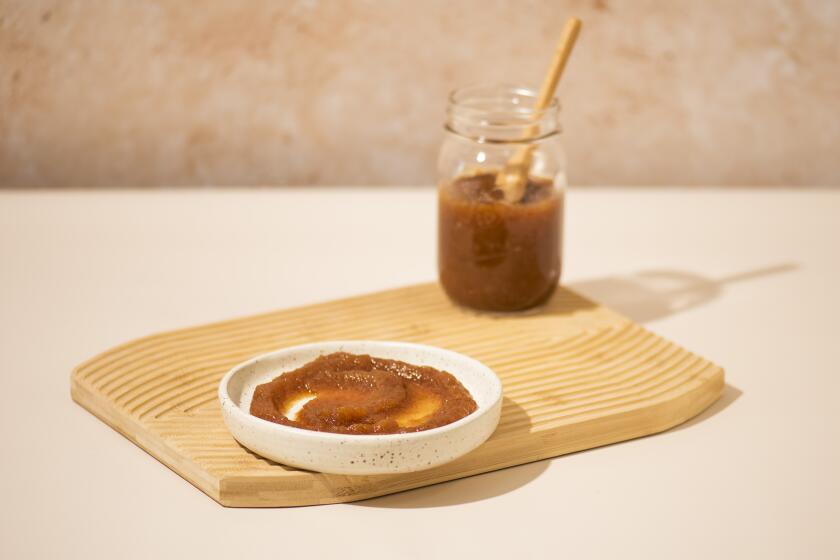Aioli
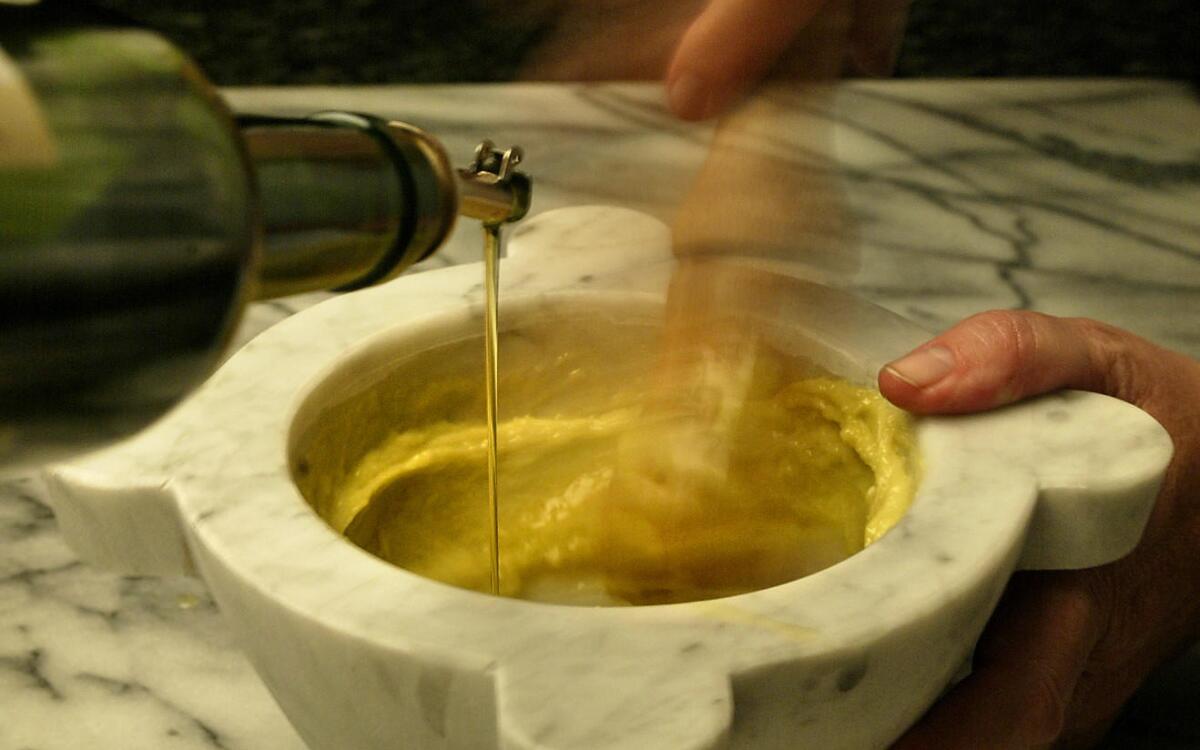
Every time I pull my Catalan mortar and pestle off the shelf, I think of a late summer lunch at Mas de Daumas Gassac. I’d visited the vineyards and cellar of the wine estate in southern France that morning, and owner Aime Guibert asked us to stay to lunch. This was no special occasion, just a summer lunch as it unfolded at the isolated estate in the wild landscape of the Languedoc.
A long table had been set under the trees in front of the old mas, or farmhouse. The tablecloth flapped in the hot summer wind while someone, I think one of the Irish graduate students spending the summer, laid the table. In all, we were 18 or 20 -- the Guiberts and their young sons, a nanny or two, students, cellar and vineyard workers, and my husband and I.
What did we have? The details have fallen away in memory. But I do remember the aioli passed around in a well-used mortar glazed in yellow splashed with green. I also think there was a cold fish. A chilled bottle of the estate’s marvelous blanc, a blend of Chardonnay and Viognier. And, of course, crudites to dip in the potent garlic mayonnaise. I remember its limpid green-gold color, the sharp scent of the garlic, and its thick, glossy texture.
When I asked Madame Guibert about it, she told me she had found the mortar in Catalonia years before. She also told me she’d made the aioli right in the mortar. This was news to me. I’d learned to make mayonnaise in a blender. And every recipe I’d ever seen at that point implied that even in a blender it was a terribly tricky business.
A couple of weeks later, in Barcelona, I found my mortar and pestle. I wanted to buy the biggest the shop had, but my husband absolutely refused to add it to our already overflowing luggage. So I settled for the medium-sized one, not nearly as magnificent. Wrapped in one of my sweaters, it made it home intact, which was the important thing. As soon as I unwrapped it, I made some aioli -- and found it isn’t tricky at all. You don’t have to whip it frantically, just steadily stir in one direction as you dribble in the olive oil until it thickens. And it will.
Pleasingly low tech
Working with a mortar and pestle is peculiarly soothing and relaxing. After pounding the garlic and sea salt together to make a paste, I fall into a kind of reverie as I work in the startling gold egg yolk. I could never see what was happening in the blender. It was all over in 30 seconds, and besides, there’s the annoying noise the thing makes.
The mortar and pestle is definitely low tech. But that’s precisely its virtue. The transformation happens right in front of you as you add the oil, drop by drop, stirring in one direction with the pestle. It’s not that it takes a lot of muscle: It doesn’t. It takes patience and attention, both of which are good for the soul.
No stress, no mess, suddenly you have aioli. Or mayonnaise, or any variation thereof. And you can serve it right in the mortar.
I have one mortar for grinding spices, a deep narrow brass one from Morocco that rings like a bell when I pound cardamom seeds or peppercorns. The pestle is heavy enough to break through the hard casing, and the mortar is deep enough that the seeds don’t just go flying out. I use a Mexican molcajete made from pitted volcanic rock to make guacamole, grinding the cilantro, chiles and salt to a paste and then mashing in the avocado to make a rough puree. I use an English pharmacist’s mortar made of smooth cream ceramic to mix Dijon mustard, herbs, vinegar and oil for a vinaigrette.
I’ve come to appreciate the difference between pesto or its Provencal equivalent, pistou, made with a heavy granite mortar and pestle. This is the big one, which holds a couple of cups. I covet one of the classic Carrara marble mortars with four “ears” to grab as handles, but the less expensive green granite Thai ones work just as well.
Wear old clothes and wrap yourself in an apron, though, in case you get carried away with the rhythm of pounding and some of the pistou escapes. Like aioli, it starts with plump fresh garlic cloves pounded with salt to a paste. Then, a few leaves at a time, you grind in the basil leaves. Bruised rather than cut, the basil releases all its aroma and flavor and forms a marvelous moss-colored paste with a nubbly texture. It takes just minutes to work in two cups of leaves. Once you taste and experience the difference, you’ll never go back to the blender.
At least once each summer I have to make soupe au pistou. Basically, it’s a Provencal version of the Genovese minestrone made with a wealth of late summer vegetables -- zucchini, carrots, potatoes, green beans, squash, tomatoes, fresh borlotti beans and more -- with a dollop of emerald pistou stirred in at the end.
Every cook in Provence has his or her recipe, which varies with what’s on hand. Mine is based on one from Lulu Peyraud of Domaine Tempier in Bandol. She is a great natural cook, now in her 80s, who has been cooking for friends and family for more than half a century. I measure every other bouillabaisse I’ve ever had against the one she cooked for a late spring lunch. And I treasure her recipe for soupe au pistou too. I’m grateful that the late food writer Richard Olney collected Lulu’s recipes in his book “Lulu’s Provencal Table” (recently reissued by Ten Speed Press).
In her version, she adds a lamb shank to the pot to give the broth more flavor, but you can omit it and still come up with a terrific vegetable soup.
A French favorite
SOUPE au pistou is one of those great country dishes for hot weather. You make it in the morning, let the flavors meld all day and then serve it, reheated, for supper with a salad and some bread and cheese. Voila, dinner with practically no effort.
I’ve shifted the kinds and amounts of vegetables to reflect what’s in the farmers market right now, and I’ve also cut down the cooking. She cooks hers two hours; because I want the vegetables to stay greener, I cook mine a little more than an hour and add the zucchini last so it doesn’t overcook.
A mortar and pestle is useful too for quickly working up a marinade and rub. Use a stone or ceramic one, not too small. One recipe that I make all the time because it’s so versatile is Judy Rodgers’ salmorigano, from “The Zuni Cafe Cookbook.”
It starts as a paste of garlic, salt, oregano and black pepper to which a little water and lemon are added to make a sauce. It’s wonderful with fish and poultry. But my favorite way to use it is as a marinade for grilled quail. I coat the cooked birds in the sauce, let the flavors marry for about half an hour, and then serve them at room temperature. You can also use salmorigano with grilled or roasted vegetables -- onions, summer squash, tomatoes, eggplants or peppers. I like eggs fried in it and ricotta baked in it. Or I just drizzle it on grilled bread.
Using a mortar and pestle brings me back to what I love about cooking: its sensuality. It’s the pleasure in the moment, in the use of a beautiful and ancient tool, and in the slow transformation of ingredients to something delicious.
In a heavy mortar and pestle, crush the garlic to a paste with the salt. Stir in the egg yolk, and mix until smooth.
Put the olive oil in a beaker or something with a spout. Stirring, always in one direction, add olive oil drop by drop until the aioli begins to thicken and emulsify. At this point, you can begin adding the olive oil in a very thin stream, stirring constantly until very thick.
Taste and adjust seasoning. If desired, for example, if serving it with steamed artichokes, add a teaspoon or so of fresh lemon juice to taste.
Get our Cooking newsletter.
Your roundup of inspiring recipes and kitchen tricks.
You may occasionally receive promotional content from the Los Angeles Times.









